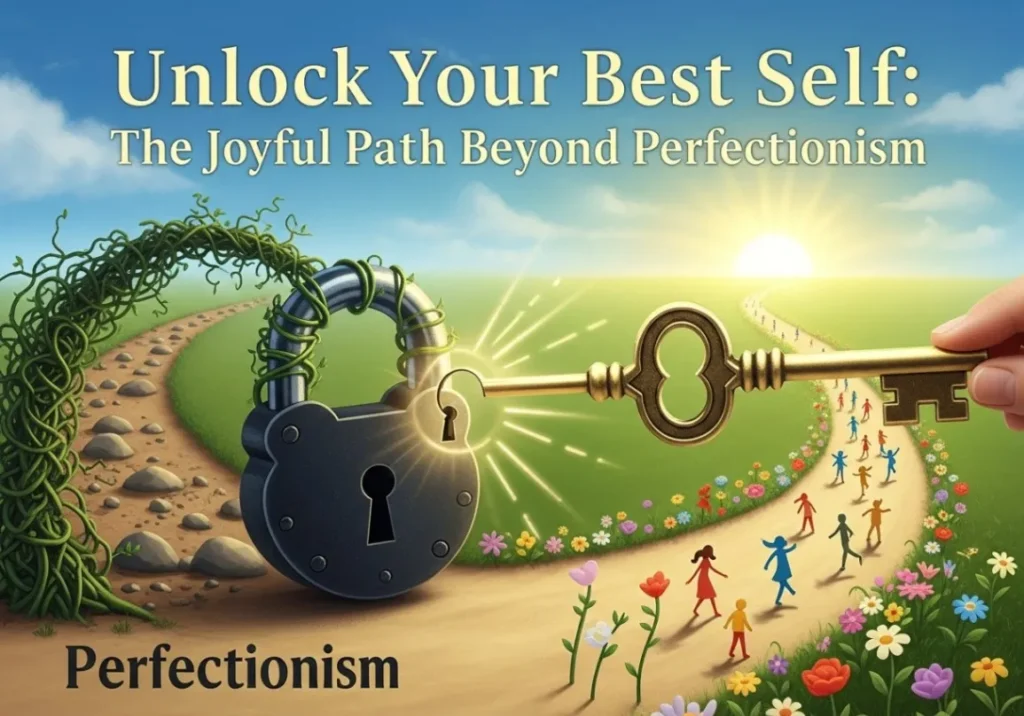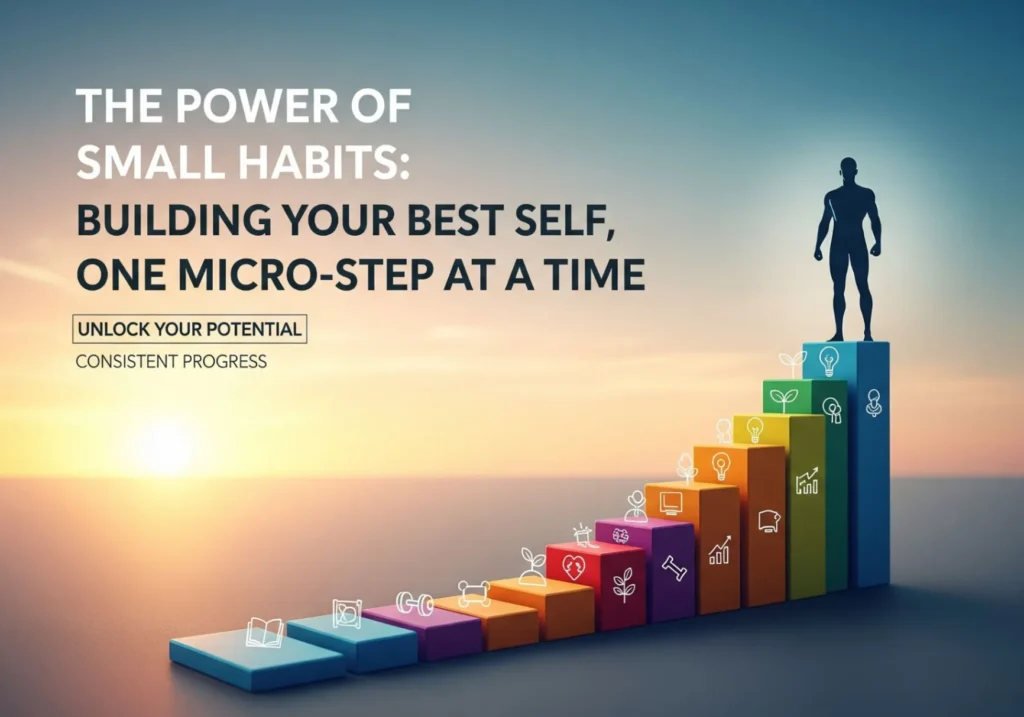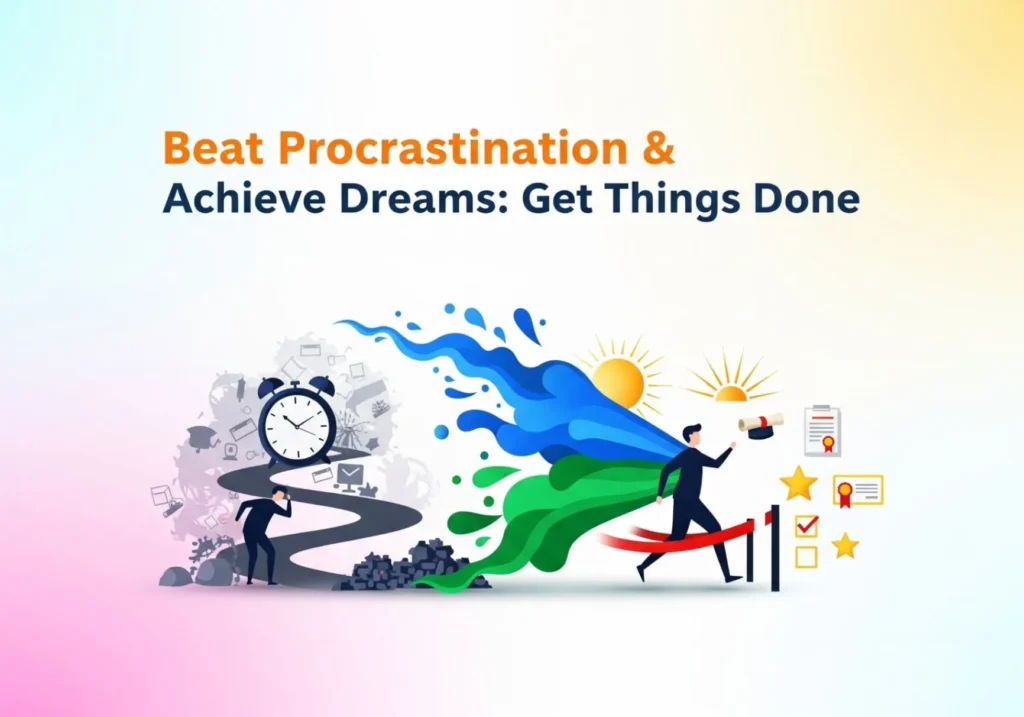Unlock Your Best Self: The Joyful Path Beyond Perfectionism

Introduction: Are You Trapped by “Perfect”?
Ever feel like you’re chasing something impossible? Perhaps you’ve taken dozens of selfies, just wanting one that’s perfect. Or maybe you’re writing an essay, but you keep deleting every sentence because it sounds dumb. If any of these scenarios hit home, you’ve encountered the subtle monster we call Perfectionism.
This monster is cunning. It disguises itself as positive traits like “having high standards.” But here’s the crucial secret: Perfectionism is not your friend. It’s a cage. It promises to make you amazing, but it actually keeps you stressed, anxious, and terrified to even try new things. It robs the joy from your accomplishments and whispers a constant message: “You’re never, ever good enough.”
This article offers you the key to that cage. This isn’t about becoming lazy; it’s about something far more powerful: self-acceptance. We’re going on a journey to understand why we chase this impossible ideal and how to finally, wonderfully, let it go. Ready to get comfortable with being perfectly imperfect? Let’s begin.
Part 1: The Perfectionism Trap – Understanding Its Hold
Is It Healthy to Strive, or Unhealthy to Be Perfect?
Let’s clarify something important. There’s a huge difference between healthy striving and unhealthy perfectionism.
- Healthy Striving: You enjoy the process, set challenging but realistic goals, feel proud of your effort, and see mistakes as learning opportunities. Your motivation comes from excitement and growth.
- Unhealthy Perfectionism: You are only focused on the perfect final result. The journey is filled with stress. You set impossible standards, are never satisfied, and see mistakes as proof that you are a failure. Your motivation comes from a deep fear of judgment.
Why Do We Chase an Impossible Ideal?
We aren’t born perfectionists; we learn it. This pressure comes from several places:
- The Social Media Highlight Reel: We compare our real, messy lives with everyone else’s curated, perfect public image, creating enormous pressure.
- The Pressure Cooker of School and Family: We are often rewarded for perfection (gold stars, A+ grades), which can accidentally teach us a dangerous lesson: “I am loved and valued only when I am perfect.”
- The Voice of the Inner Critic: For a perfectionist, the voice in their head is a harsh, relentless critic (the “Perfectionist Gremlin”) that points out every single flaw and is fueled by a fear of being judged by others.
Understanding where your perfectionism comes from is the first vital step. It’s not a flaw in your personality; it’s a learned response. And because you learned it, you can absolutely unlearn it.
Part 2: The High Price of Chasing “Perfect” – What It Costs You
Chasing perfection isn’t just stressful; it comes with real, heavy costs.

- Cost #1: Constant Anxiety and Mental Exhaustion. When your standard is “flawless,” every task becomes a high-stakes test of your worth. This constant pressure is utterly exhausting.
- Cost #2: The Procrastination Paradox. Perfectionism often leads to extreme procrastination. The fear of not doing something perfectly is so paralyzing that it’s easier to not start at all.
- Cost #3: It Crushes Your Creativity. Creativity thrives on exploration and mistakes. Perfectionism shuts down your willingness to take risks and experiment, keeping you rigidly coloring inside the lines.
- Cost #4: It Can Damage Your Friendships. You might become overly critical of others, or you might hide your true, imperfect self, preventing deep, authentic connections.
- Cost #5: It Steals Your Joy and Satisfaction. Perfectionism is a joy thief. You could accomplish something amazing, but your brain will immediately zoom in on the one tiny flaw, so you never get to truly celebrate your successes.
Part 3: The Wabi-Sabi Way – A New Mindset for a Happier Life
What’s the alternative? We can embrace a beautiful and powerful idea from Japan: Wabi-Sabi (侘寂). It’s the art of finding profound beauty in imperfection.
- Wabi refers to a quiet, simple, rustic beauty.
- Sabi speaks to the beauty that comes with age and wear.
Perfectionism cherishes the flawless new smartphone. Wabi-Sabi appreciates the worn, dog-eared copy of your favorite book, complete with notes and a tea stain.
Kintsugi: The Art of Golden Repair and Resilience
One of the most powerful expressions of Wabi-Sabi is Kintsugi, the art of repairing broken pottery with golden lacquer. The cracks are not hidden; they are highlighted as the most beautiful part of the object. The “damage” becomes part of its history, making it more unique and precious.

This is the mindset we can bring to our own lives. Your “cracks”—your mistakes, struggles, and quirks—are not things to be hidden. They are your Kintsugi lines. They are the evidence of your resilience and your unique journey. You are more beautiful because of your imperfections, not in spite of them.
Part 4: Your Imperfection Toolkit: 6 Powerful Ways to Let Go of “Perfect”
Here is your essential starter toolkit. Pick one that resonates with you and give it a sincere try.
Your Imperfection Toolkit
- Name Your Inner Critic (And Talk Back). Give your “Perfectionist Gremlin” a silly name like “Nigel.” When it starts yelling, say, “Thanks for your opinion, Nigel, but this is a first draft. It’s supposed to be messy.” This creates distance and reminds you that its voice is not fact.
- Embrace the “Good Enough” Rule. For low-stakes tasks (like cleaning your room or writing a casual text), consciously aim for “good enough” or even “B-minus work.” Get it done and move on. This frees up mental energy.
- Celebrate the Messy Middle of the Process. Reframe mistakes as valuable data. When you fail at something, you’ve just learned what not to do next time. Celebrate being brave enough to try.
- Apply the “Best Friend Test.” When you make a mistake, ask yourself: “What would I say to my best friend in this situation?” You would offer kindness and support. Now, try saying that same compassionate message to yourself.
- Practice the “5-Minute Start.” To conquer procrastination, commit to working on a dreaded task for just five minutes. Starting is the hardest part; once you break that wall of fear, it’s much easier to continue.
- Curate Your World for Positivity. Audit your social media feed. Unfollow any account that consistently makes you feel “less than.” Actively follow accounts that celebrate imperfection and authenticity.
Your Imperfection Challenge!
This week, pick ONE thing that you would normally try to make absolutely perfect. Then, consciously and intentionally allow it to be “good enough.” Notice how it feels to let go of that intense pressure. Share your experience in the comments below!
Part 5: Living Your Imperfectly Perfect Life
Letting go of perfectionism is a continuous, mindful practice. There will be days when the Perfectionist Gremlin is loud. And that is perfectly okay. The goal isn’t to become a “perfect non-perfectionist.” The real goal is simply to be a little kinder to yourself today than you were yesterday.
Imagine what your life could look like without the constant, draining pressure of being flawless. You could fearlessly try new hobbies, cultivate deeper friendships, and feel genuine pride in your hard work. You could be, quite simply, more free.
Embracing imperfection is one of the bravest, kindest, and most important things you will ever do for yourself. It is the authentic path to truly loving yourself—all your unique “cracks” and beautiful complexities included.
Your life story is not meant to be a flawless, airbrushed photograph. It’s meant to be a magnificent Kintsugi bowl, where your golden cracks proudly tell the compelling story of a life courageously and fully lived. So, take a deep breath. Give yourself permission to be fully human. Allow yourself to be both a masterpiece and a work in progress, all at the very same time.





Join the Conversation!
What’s one immediate takeaway that resonated most with you? Which tool from this imperfection toolkit are you excited to try first? Share your thoughts and experiences in the comments below – remember, we’re all on this wonderfully messy journey together!